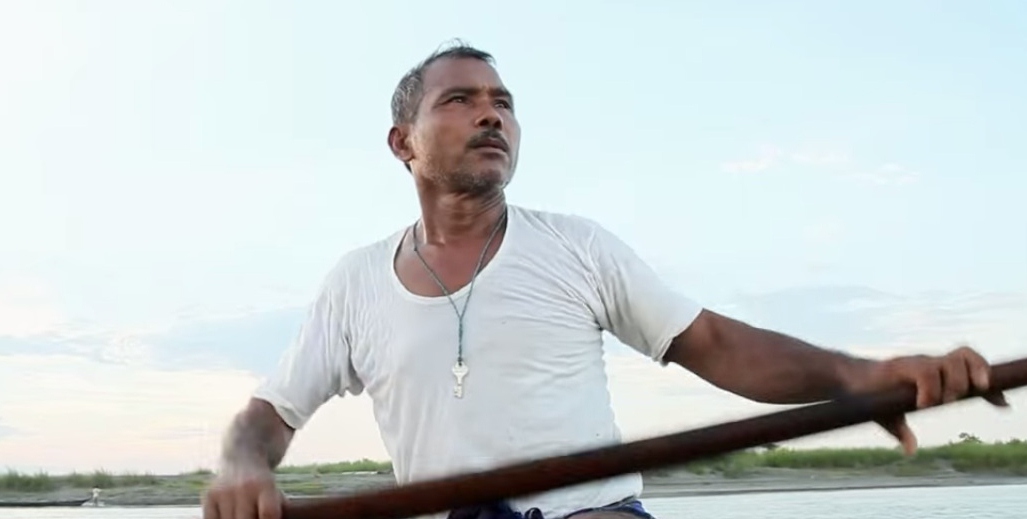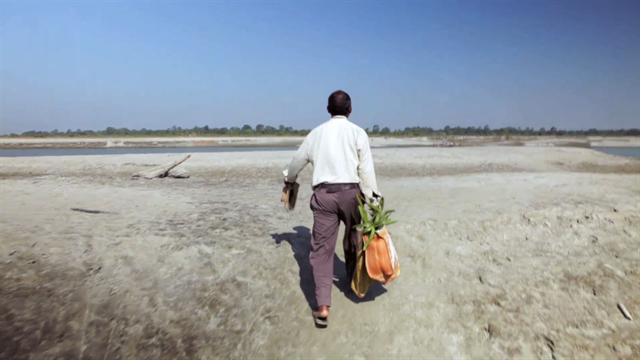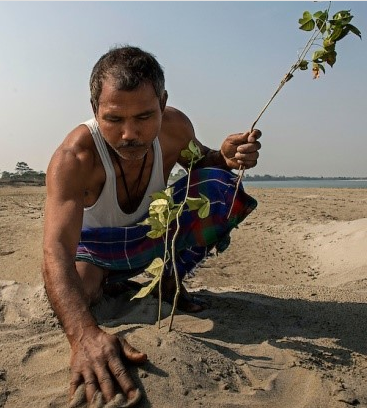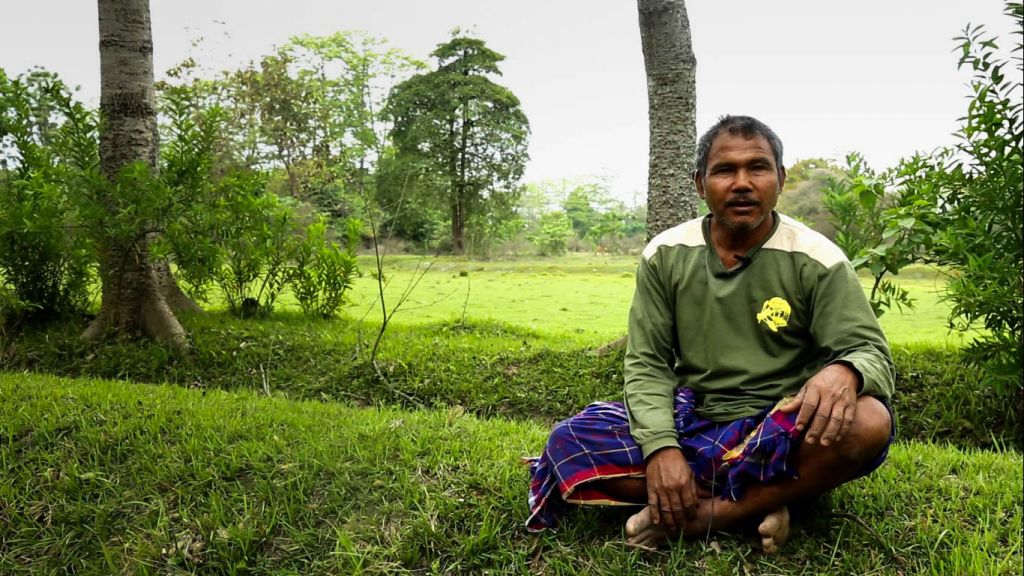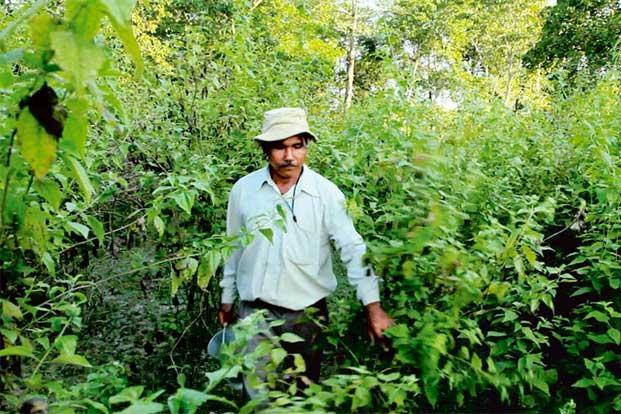Growing up third among his 13 siblings, which included 7 sisters, he came from humble beginnings. His parents sold milk to earn a meager living to support their family.
Poverty compelled his parents to leave their five-year-old son Jadav Payeng in the care of Anil Borthakur, a court-master at the District Judge Court in Jorhat, who looked after his schooling.
As a teenager in the 1970's, Payeng returned home to noticed more than 100 snakes washed up on shore dead, in his home town of Majuli Island. Erosion had erased vegetation from island sandbars, stripping away grassy cover which caused native species to flee the area.
Water from floods have transformed areas into barren landscapes, with shorelines receding after every monsoon rain. The island, Payeng's birthplace, was rapidly shrinking.
Majuli is home to 170,000 people and is one of the world's largest river islands which makes it vulnerable to tides. Every spring when glacial melts from the Himalayas empty into the river, it creates a problem for the island. The flooding problem is intensified as a result of climate change and earthquakes that alter the river's shape and flow after each event.
In the past 100 years, Majuli has lost 70% of its landmass.
"My house fell into the water," Runa Buhyan, an elderly farmer, told the New York Times in 2012. "We are worried about our livelihoods. How can we provide for our families? That uncertainty is always there."
That's when Payeng decided to act.
Heading into the village, he came up with an idea. Where there were trees, there are birds, where there are bird's eggs, that means there's food for the snakes. He left the village with 50 seeds and 25 bamboo plants.
In April 1979, when he was just 15 or 16 years old, he set out alone, starting to scatter seeds and stabbing the barren earth with stick to create holes deep enough to foster new saplings.
From April to June, he planted the forest. For the rest of the year, he collected seeds and saplings.
"I covered a distance of a kilometer in five years," Payeng recalls, "and in stages it got covered with dense vegetation dominated by trees."
The goal was to grow enough vegetation to slow down erosion of the area.
As his trees grew bigger, so did his concerns about how he was going to protect them.
"The biggest threat was from men. They would have destroyed the forest for economic gain and the animals would be vulnerable again," he said in a documentary about his forest.
He then quietly continued to plant trees on his home island, marrying at the age of 39 and having 3 children, 1 girl and 2 boys.
For 30 years he went undiscovered until nature photographer Jitu Kalita came upon him in 2009.
"I was exploring a barren part of the Brahmaputra by boat when I saw something strange: it looked like a forest far in the distance ... I couldn't believe my eyes," said Kalita.
Now more than 38 years later, he has a forest to show for his efforts. Payeng, now in his mid-fifties has been hailed the "Forest Man of India," for his work in rescuing the island.
"He taught me that you can accomplish a lot with very little," William Douglas McMaster, a Canadian filmmaker said, "He doesn't even wear shoes. His way of life is extremely pure; free of possessions, yet he is extremely happy and positive."
Today the forest measures 1,400 acres, a remarkable accomplishment that dwarfs Central Park's 843 acre size. Rhinoceroses, deer, tigers, and as many as 115 elephants have moved into the now-dense forest. Vultures have also been seen returning to the area for the first time in 40 years.
"What Payeng has done is to show that a single person can make a measurable, positive impact on the environment," said McMaster.
Watch the amazing transformation in the video below.
"I think that message is more powerful than simply showing people all that we've done wrong, with no way to make it better."
Source: Huffington Post / The Weekend Leader

